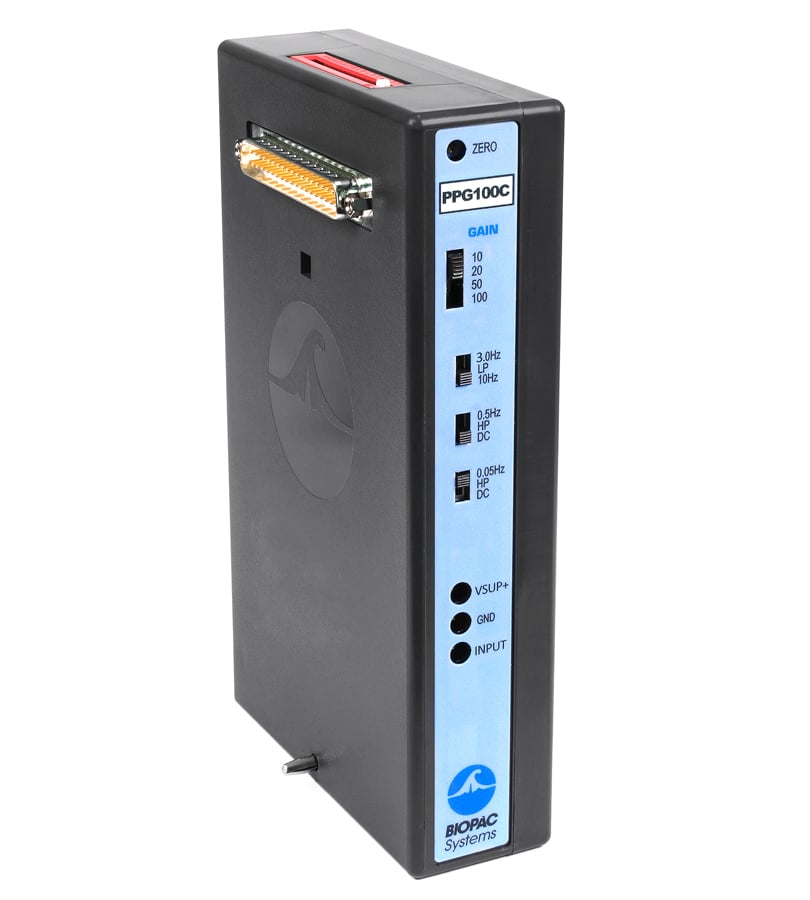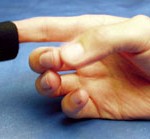Each PPG100C requires one photoplethysmogram transducer:
- TSD200 with Velcro for easy attachment to finger OR
- TSD200C* with ear clip
The TSD200 consists of a matched infrared emitter and photo diode detector, which transmits changes in infrared reflectance resulting from varying blood flow. Blood is highly reflective of near infrared light wavelengths, due to the heme subunit of hemoglobin. When the PPG transducer is placed on the skin, in proximity to capillaries, the reflectance of the infrared light from the emitter to the detector will change in accordance to capillary blood volume. The PPG waveform peaks when capillary blood volume is maximized.
The TCIPPG3 interface adapter plugs into the front of the PPG100C and allows it to work with SpO2-type probes that terminate in a 9-pin D female connector (such as those from Nonin®). The visible light transmitter and receiver of the probe is employed to establish a very high quality, high signal/noise ratio, transmissive, photoplethysmogram signal, suitable for evaluating PPG signal characteristics. Note that this configuration does not provide SpO2 output, but rather a highly-detailed PPG waveform versus time. Probes are available for fingers, toes, earclip, and universal attachment. BIOPAC probes compatible with the TCIPPG3/PPG100C combination include SpO2 transducers TSD124A, TSD124B and TSD124C. The TCIPPG3 also supports use of the OXY100E-200 extension cable.
* The older model TSD200B with adhesive collars is no longer sold but works with the PPG100.
Product Family
Product Type
Product Options
MODULAR CONSTRUCTION
Amplifiers snap together for easy system configuration and re-configuration.
Intuitive, Elegant AcqKnowledge Software
Powerful automated analysis. Instantly & easily view, measure, analyze, transform, and report data.
Powerful MP160 Data Acquisition and Analysis System
Flexible, proven modular data acquisition and analysis system for life science research.





Stay Connected